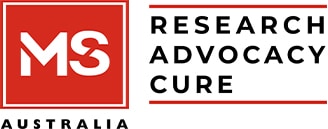Updated international guidelines for diagnosing multiple sclerosis (MS) were published today, enabling earlier and more accurate diagnosis so people can begin treatment sooner and improve their long-term health outcomes.
Known as the McDonald Diagnostic Criteria, these guidelines are the global benchmark for diagnosing MS, with the latest updates published in The Lancet Neurology.
Timely diagnosis gives people with MS the best chance to start treatment early, when it is most effective, helping to protect the brain and spinal cord and maintain quality of life.
According to MS Australia’s World MS Day ‘My Diagnosis’ Report, MS diagnosis in Australia currently takes an average of nearly four years from the onset of symptoms. These updated guidelines are designed to shorten delays and provide people with answers much sooner.
“This is a major step forward in improving care and quality of life for people with MS in Australia and across the world,” said MS Australia’s CEO Rohan Greenland.
“For too many Australians, an MS diagnosis comes only after years of stress, multiple tests and uncertainty. These updated criteria will allow people to begin treatment sooner and take control of their MS journey.”
Since the McDonald Diagnostic Criteria were first introduced in 2001 and last revised in 2017, each update has reflected advances in research and technology, helping reduce delays and improve outcomes.
MS Australia’s Head of Research, Dr Tennille Luker, said the changes will allow clinicians to confirm MS earlier and with fewer symptoms, giving them greater certainty and more ways to make a diagnosis.
“These updated criteria provide a broader set of tools to diagnose MS earlier and with greater confidence – from advanced MRI techniques to simple eye scans and spinal fluid tests,” Dr Luker said.
“In MS, time is brain. Earlier diagnosis means earlier treatment, which we know leads to better long-term outcomes for people with MS.”
These updates are not just about clinical accuracy – they are about giving people clarity, reducing uncertainty, and helping them move forward with their lives. That reality was echoed by Laura and Sarah, two Australians living with MS, who shared the personal impact of their diagnosis.
“Waiting for a diagnosis had an enormous impact on me emotionally, my ability to focus and my ability to work,” said Laura.
“With the diagnosis came relief – an end to the disquieting uncertainty of ‘what is wrong with me?’ – and the promise of disease-modifying therapies to stall neurodegeneration,” added Sarah.
Fifty-six international experts from 16 countries, including Australia, with expertise in clinical management, radiology, methodology, epidemiology and patient perspectives, came together to review and update the 2017 McDonald Diagnostic Criteria.
Key updates to the criteria include:
- Allowing MS to be diagnosed earlier, sometimes after a single clinical episode.
- Recognising radiologically isolated syndrome (MS-like brain or spinal cord damage seen on MRI, even before symptoms) as MS when supported by other tests.
- Introducing new tools for diagnosis – such as simple eye scans (optical coherence tomography) and newer spinal fluid tests (kappa free light chains) – which are less invasive and may allow for earlier diagnosis.
- Expanding criteria for diagnosing MS in children and adults over 50, improving accuracy across all age groups.
This initiative was led by the International Advisory Committee on Clinical Trials in Multiple Sclerosis, co-sponsored by the National MS Society (US) and the European Committee for Treatment and Research in MS (ECTRIMS).


